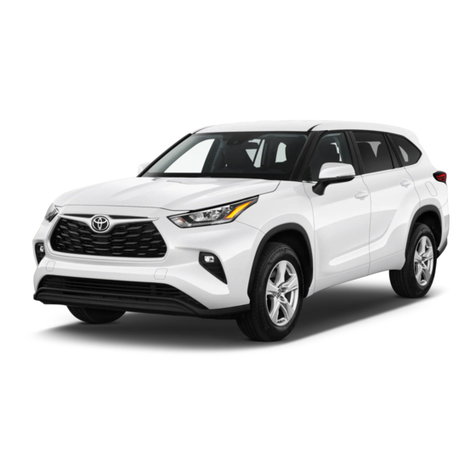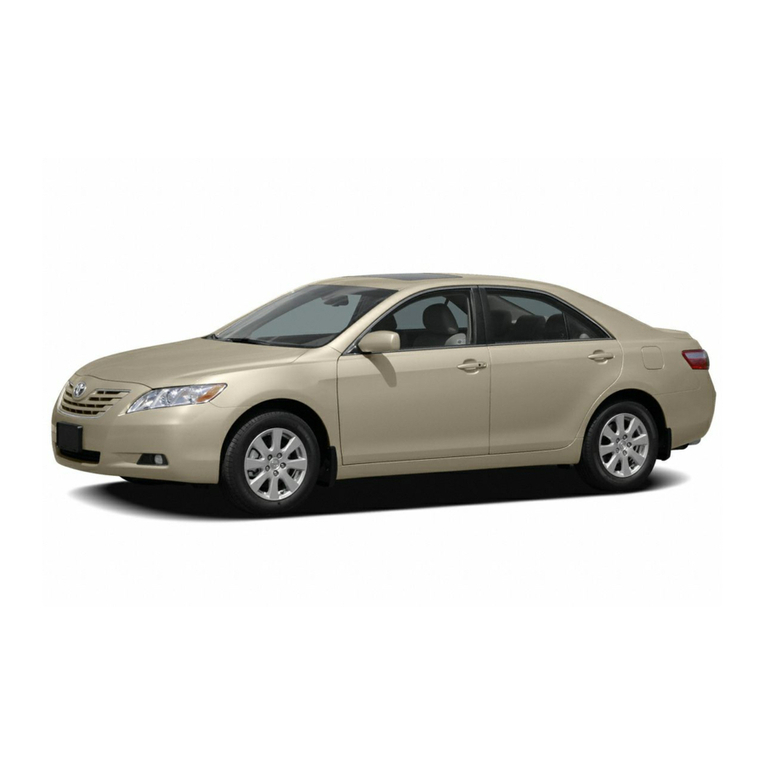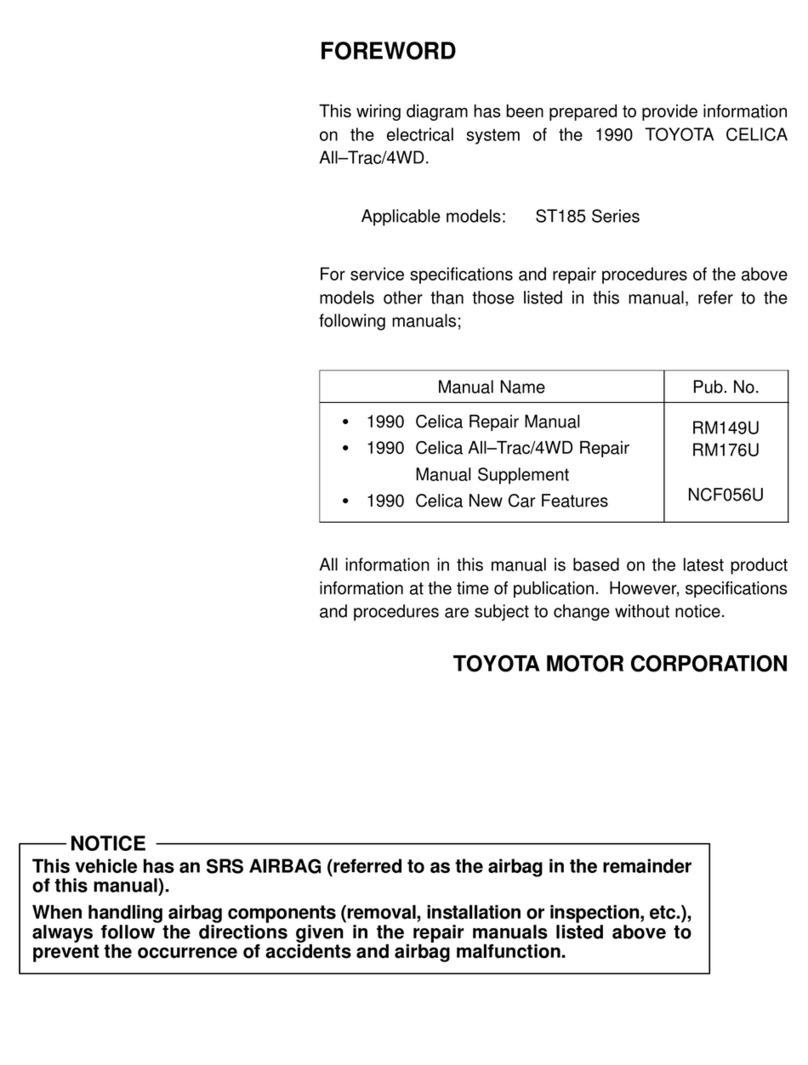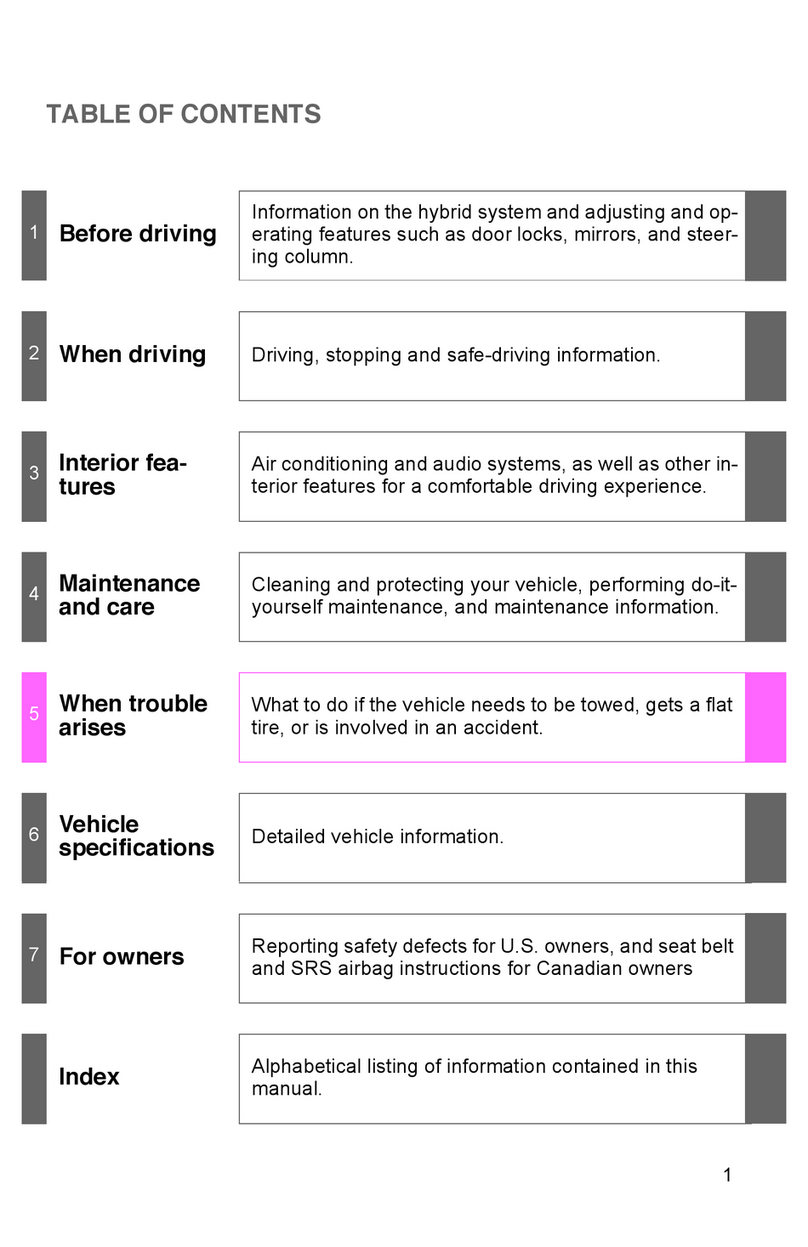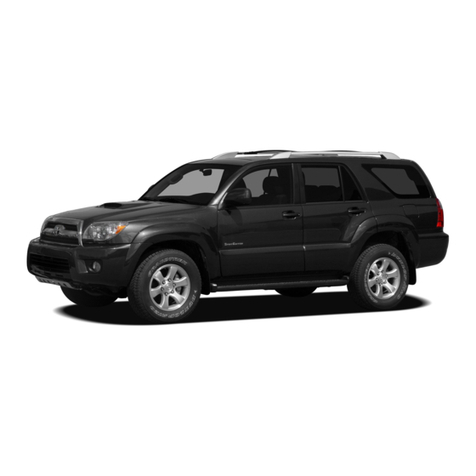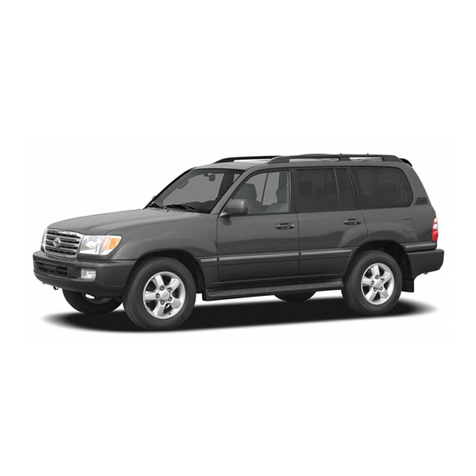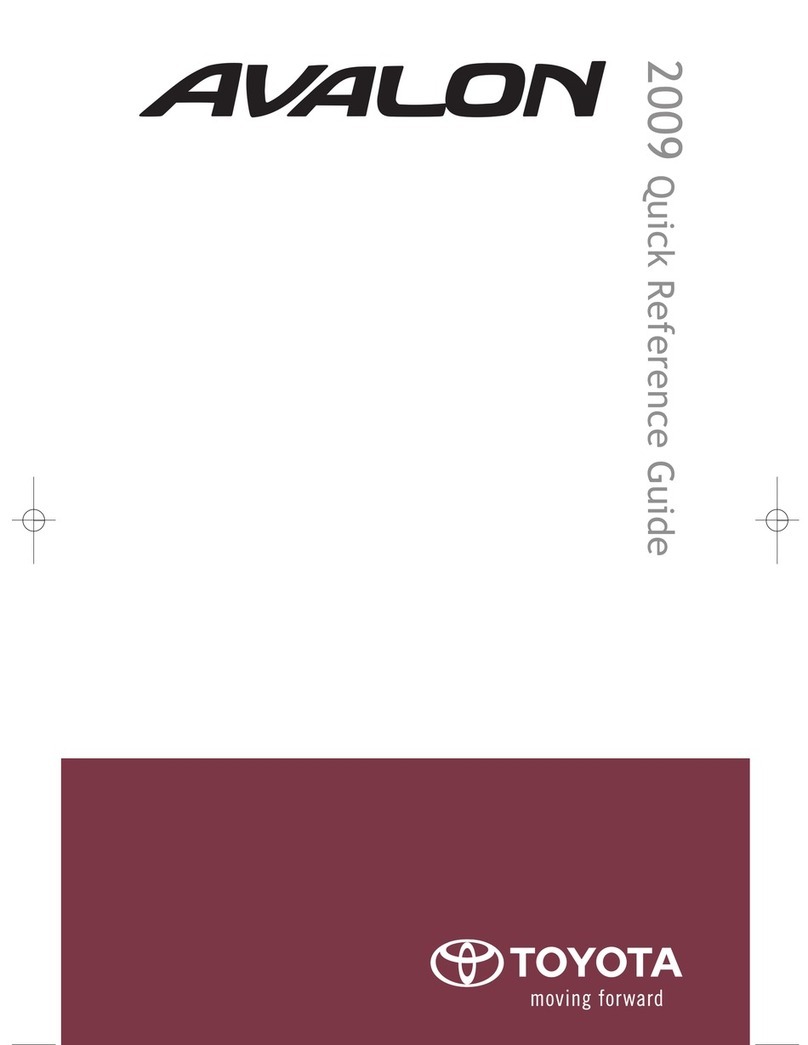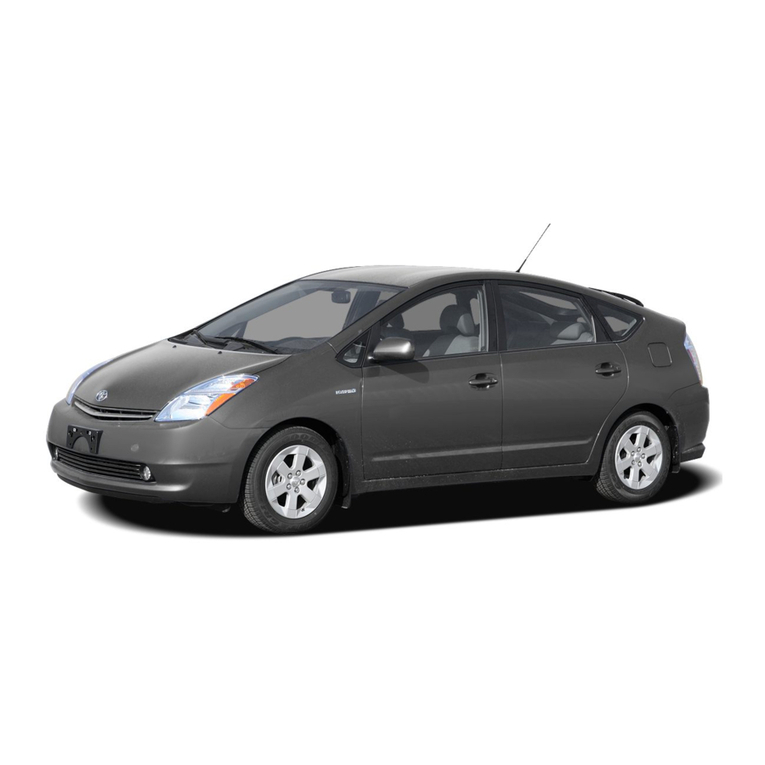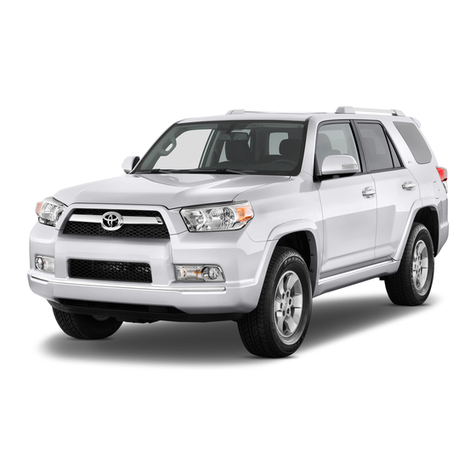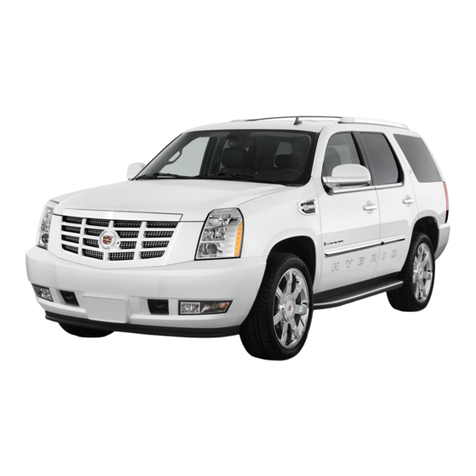15
OVERVIEW FEATURES/OPERATIONS SAFETY AND EMERGENCY FEATURES
Windows-Powe ea qua te
To open Push the right side of the switch.
To close Push the left side of the switch.
Moon oof
Sliding ope ation Tilting ope ation
To open Push and hold “ .” Moonroof will o en
and sto just short of the fully o en osition
Toyota recommends this osition for driving, as it
reduces wind throb. Push again to fully o en.
To close Push and hold “ .”
To tilt up Push and hold “UP.”
To lowe Push and hold the o osite side of “UP.”
NOTE: If battery is disconnected, the moonroof needs
to be reinitialized. Refer to the Owner’s Manual for
more details.
>
>
Ga age doo opene (HomeLink®)*
Garage door o eners manufactured under license
from HomeLink®* can be rogrammed to o erate
garage doors, estate gates, security lighting, etc.
Refer to the Owner’s Manual for more details.
For rogramming assistance, contact the Toyota
Customer Ex erience Center at 1-800-331-4331, or
visit htt ://www.homelink.com
*HomeLink®is a registered trademark of Johnson Controls, Inc.
14
FEATURES/OPERATIONS
To tu n the system “ON” o “OFF” Push the
button.
To set a speed Bring your vehicle to the desired
s eed. Push the lever down toward “- SET.”
To cancel the set speed Pull the lever to “CANCEL”
or de ress the brake edal.
To esume set speed afte cancel Push the lever
u toward “+ RES.” If vehicle s eed falls below
25 m h, the set s eed will not be resumed.
NOTE: To raise set s eed, ush u toward “+RES.” To
lower set s eed, ush down toward “-SET.”
Refer to the Owner’s Manual for more details.
Tu ning system on/off Setting a speed
Indicator light
Left Right
C uise cont ol
Windows
Window ope ation
To open o close Push down or ull u on the switch.
Automatic ope ation Push the switch com letely
down or ull it com letely u and release to fully
o en or close. To sto window mid-way, lightly ush
the switch in the o osite direction.
Window lock switch
Push the switch to deactivate the assenger windows.
Driver side Window lock
switch

